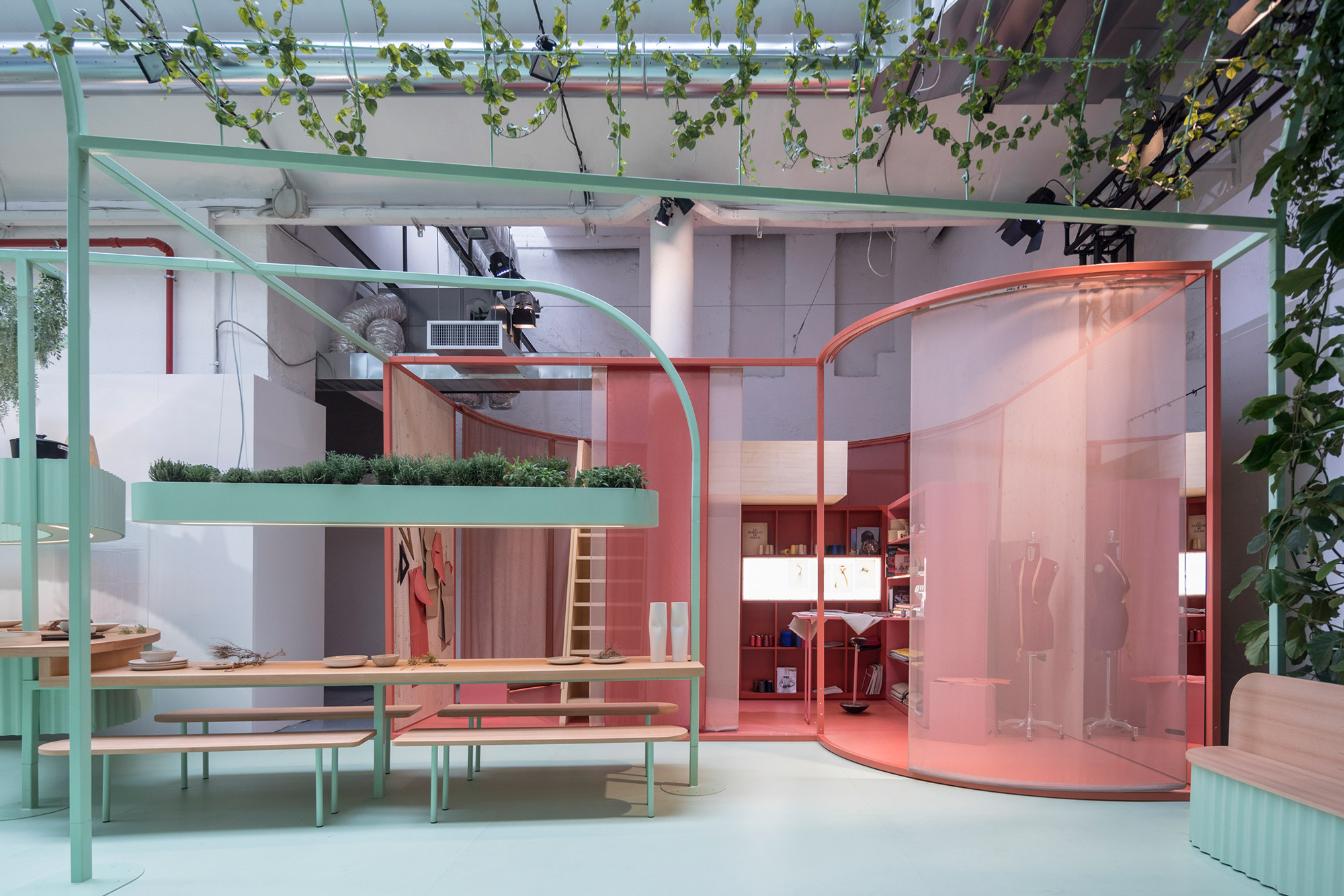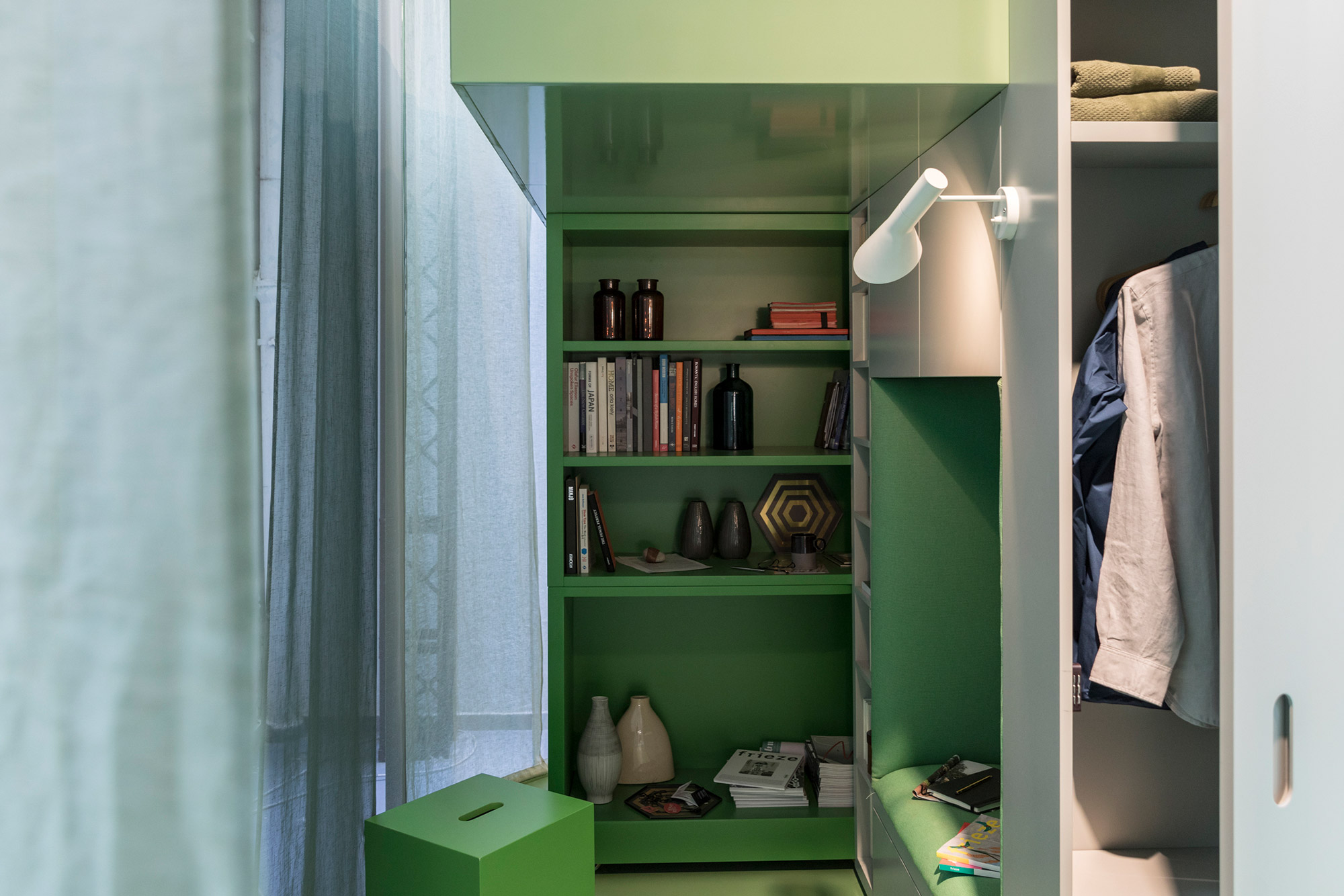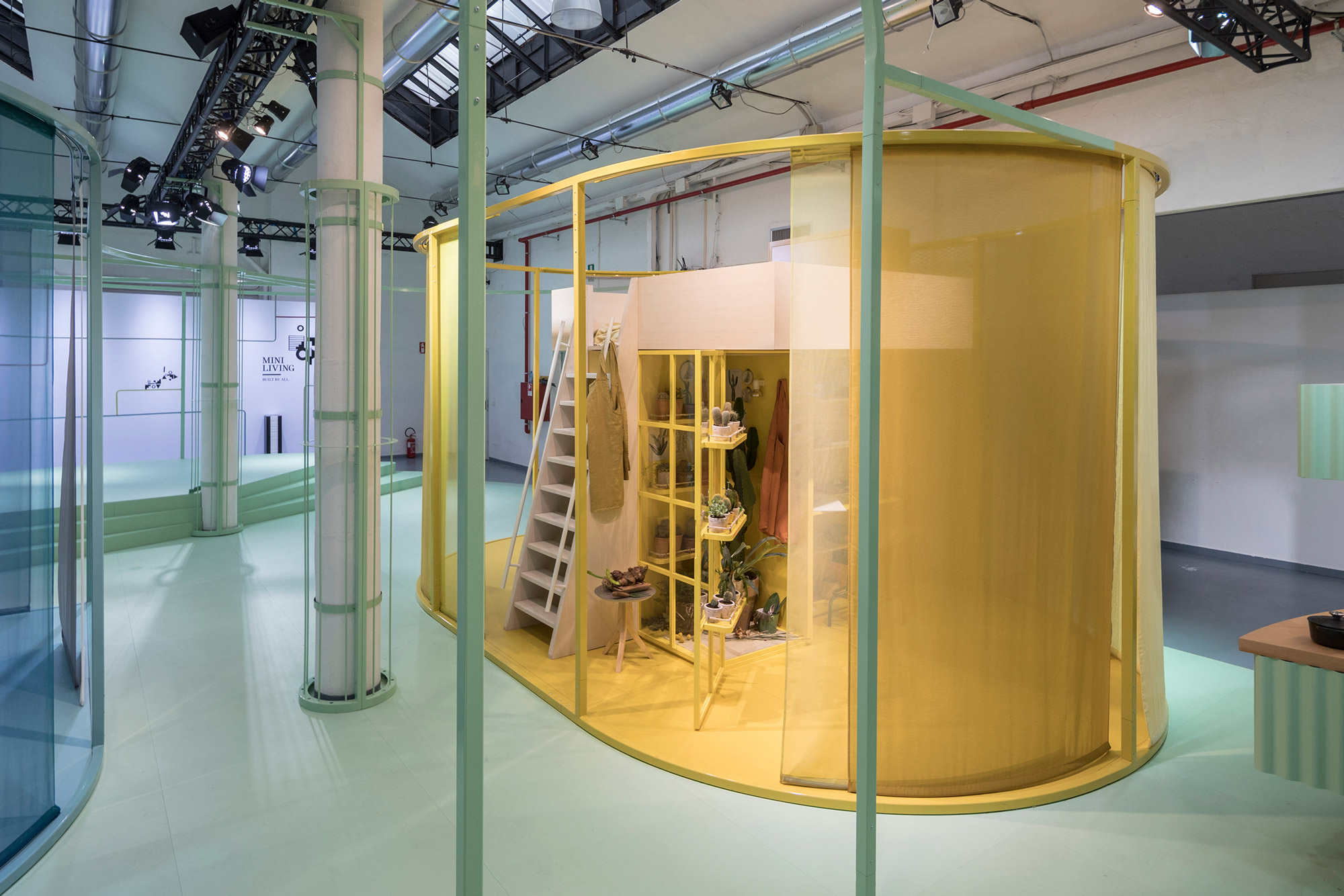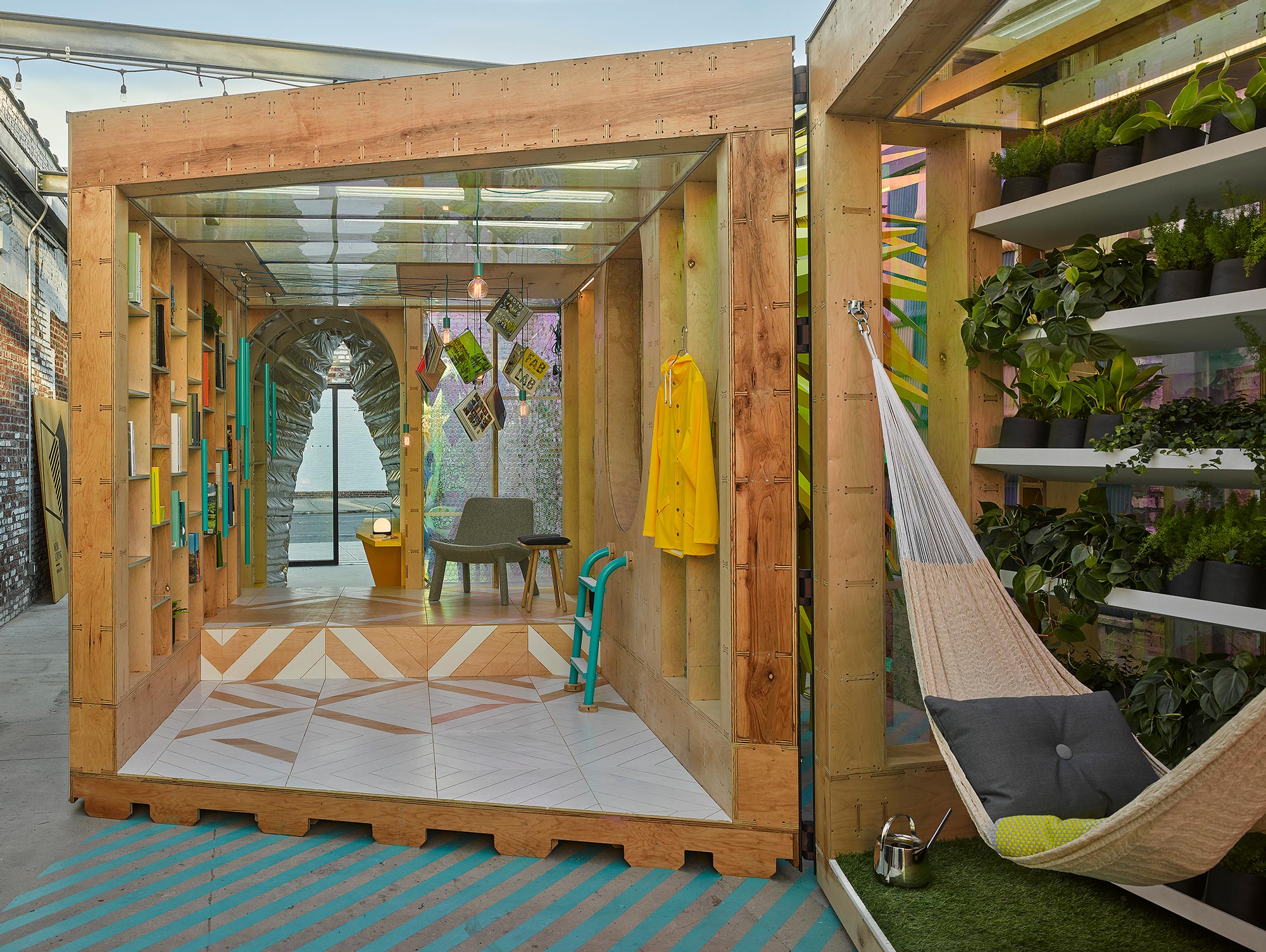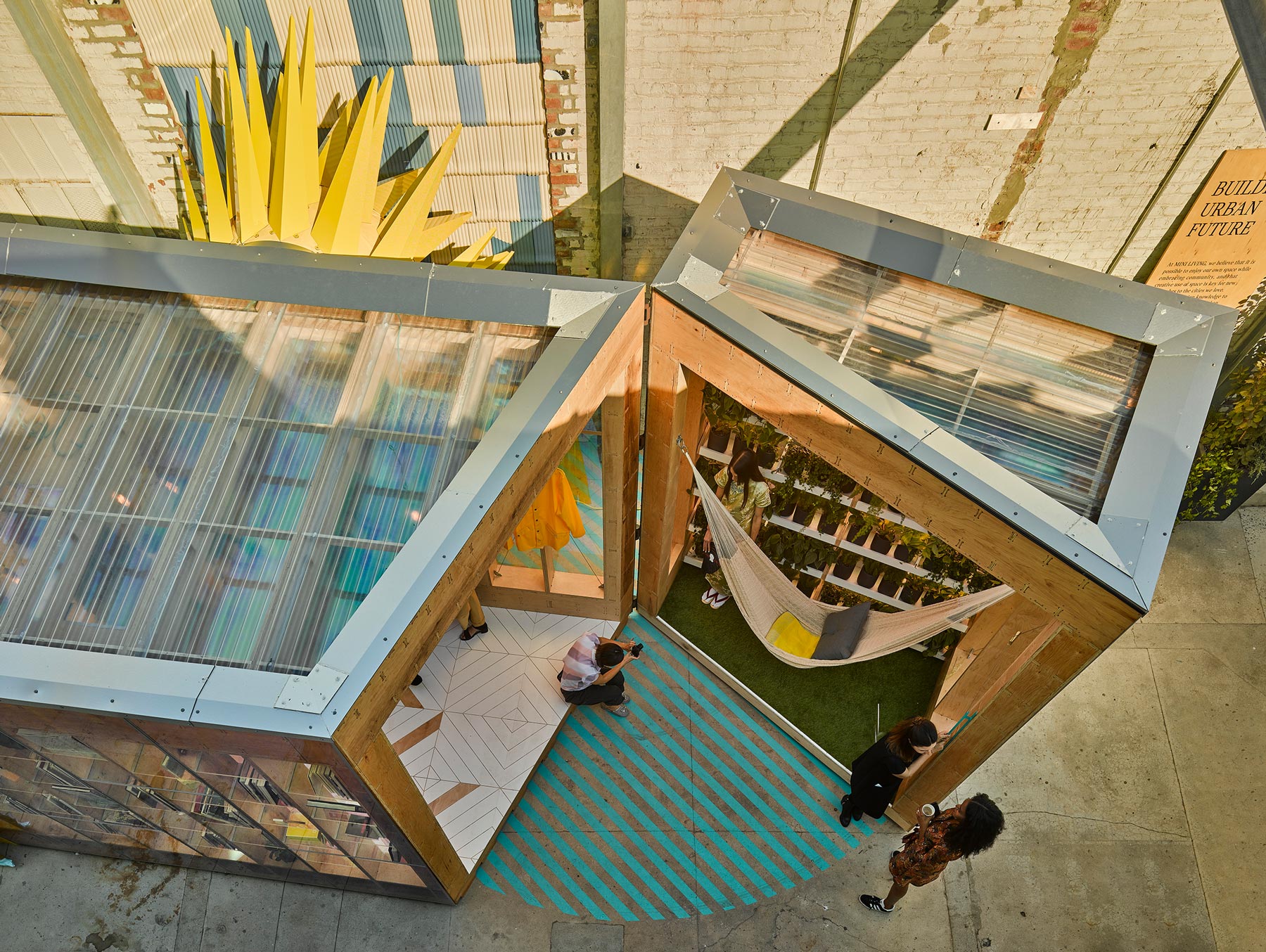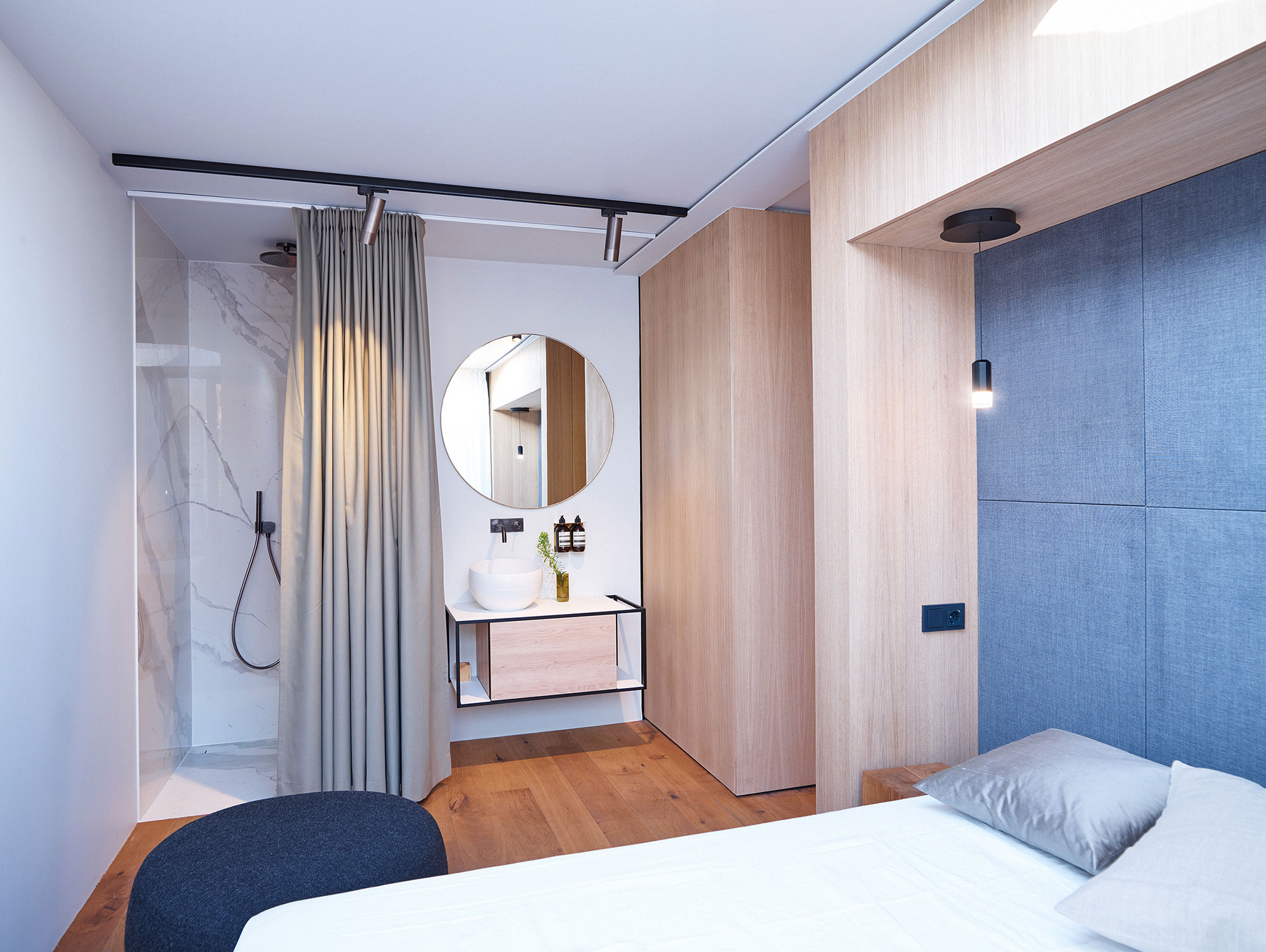Your home is wherever you are
Andrea Wiegelmann • 03.07.2018
With the rapid spread of broadband technology and development of the Smartphone, our use of space, infrastructure and services has changed fundamentally during the second half of the first decade of the new millennium. The range of digital services alters the rhythm of our lives and has an impact on how we live.
The curators of the Swiss pavilion at this year’s 16th Architectural biennial in Venice, which was awarded the Golden Lion prize for its installation «Svizzera 240: House Tour», present contemporary, standardised residential construction by superimposing various scalings of selected footprint sequences. Here living is programmed on defined uses and standardised components. Even if the curators explicitly point out that they are not criticising the standards in residential construction with their installation, the effect of the repeated scenes in different scales is still sobering. The standardised perceptions of the residential building industry are a long way away from opening up public spaces and therefore far removed from the issues that will characterise how we live and our lives.
Already in 1985 the two authors Philip J. Stone and Robert Luchetti described how the development of the cordless telephone would change the way we work and therefore the use of office buildings. With the spread of broadband technology, Smartphones and the introduction of the app store as a sales portal for mobile applications, the way we deal with space, infrastructure and services has actually changed fundamentally during the second half of the first decade of the new millennium. Digital services alter the use of urban structures and therefore the rhythm of our lives.
While private ownership – our own home, the house, the car – were a manifestation of our social status at the end of the 20th century, the advance of digitalisation and therefore the increased flexibility above all in urban centres has led to a shift in values. We present ourselves on social media, while physical ownership has become second rate and «sharing» is the model that corresponds to this society.
Sharing as a phenomenon of our time
What started with «Airbnb», the renting out and renting of living space by private individuals to private individuals, has now arrived in other sectors. The Zurich company «sharoo» offers a platform for hiring cars and this is therefore in line with this trend. «The car as a status symbol is outdated, and an increasing number of people live in urban areas without their own car, but don’t want to give up the convenience of having their own car. Mobility at the press of a button is in demand», says Jana Lév, manager of strategic corporate development at sharoo. «On average vehicles remain unused for 23 out of 24 hours per day. Also because lots of people don’t need their cars for their commute to work, particularly in cities. And they can be rented out precisely during this time to private individuals, companies, cities and also residential developments.» The Smartphone and the development of applications is also a pre-condition for this form of sharing. Hirers and people who rent cars out, similar to Airbnb, can register on the platform and book the cars via the app. Jana Lév talks about «Mobility on demand».
This development can also be identified for living: To the extent that private ownership is losing importance, private living space as the location of representation is also losing its relevance. Retreating will take place, if at all, on an individualised basis. One doesn’t even need one’s own home to do this. The corresponding availability in co-working areas, sports studios, libraries or even universities is being used to an increasing extent.
This means that the traditional divisions between living, working and leisure are becoming redundant. Living may then perhaps be a description for all our activities, if these terminological definitions are not to disappear completely. But what does this mean for our previously very mono-functional conditioned buildings and our cities?
For Oke Hauser, Creative Lead MINI LIVING, this results in perspectives in the programming of our urban centres:
«Cities have an ambivalent character. On the one hand, they have a rigid structure of buildings and infrastructure, while on the other hand they are subject to continuous change through alterations in society and technical innovations. New aspects of mobility such as autonomous driving or sharing make it possible to re-think central urban space.»
If one takes this further, then urban infrastructure and buildings could in future be used for many different purposes, depending on requirements. This is also made possible through digital networking via apps and Smartphones.
In this way new options to liven up locations are opened up, which previously had mono-functional uses such as multi-storey car parks, garages or also properties not frequented at certain times of the day or night. Think tanks worldwide are focussing on what these hybrids might look like, how the interaction between the different activities could also be accommodated from a planning perspective. A contribution to the discussion is provided by MINI LIVING as part of this year’s Salone del Mobile in Milan. The «MINI LIVING – BUILT BY ALL» installation, which was developed with the London-based office Studiomama, presented a living and working landscape in which various uses were brought together, including an individual leisure programme. A building, which can provide such a setting, is a long way away from our current standardised office and living layouts. In Milan the installation was located in an empty factory. Supermarkets or undeveloped office floors would be suitable for such a use. Does this mean the allocation of a defined use for a building becomes superfluous?
BUILT BY ALL
The units placed in the room offer space for retreating, working and leisure on a minimal area and in conjunction with the surrounding infrastructure create a high level of flexible options for use and individual acquisition. Design: MINI LIVING with the London-based architectural office Studiomama; Source/Photographer: ©MINI
For Oke Hauser the building of the future will be characterised by a sturdy structure, which integrates various uses and can therefore react flexibly to the relevant requirements of living, working and the public. Living as a partial aspect with work and leisure also merges into a change in location. Jana Lév also sees the car as a possible home for these uses in the future: «We are observing the developments associated with self-driving vehicles very closely and assume that expanded application will become possible through this technology. The time we spend on the road today, often in traffic jams, can be used to work, shop online or relax.» Lév presumes that having one’s own car will increasingly lose its importance and models like that of sharoo will expand further.
If our urban spaces can have multiple uses, this then also raises the question of how they are designed. Should urban spaces be configured differently in the future? For Oke Hauser such a question does not go the heart of the matter: «Perhaps the lack of suitable space is actually not the problem, but the lack of creative handling of the existing space. We are always looking for undiscovered spatial potential in cities. The installation in Milan shows for example how existing, unused space in the city centre can be re-programmed.»
URBAN CABIN
The installation focuses on our future, urban living habits through the creative use of the available space. The «Micro-House» investigates the requirements of contemporary living in various contexts. Design: MINI LIVING with the New York architect Bureau V; Source/Photographer: ©MINI
Acquisition of space
«The idea of hybrid uses therefore plays a central role in our future projects», explains Hauser in this connection. «In Shanghai we are opening a project this year, which is a precise example of this. We are creating a small town in the building, which contains a multi-layered mix of apartments, work and also public areas in the form of cultural and leisure activities. By integrating public functions, buildings are created that are closely linked to the character of the relevant city and therefore also generate added value for the location, the neighbourhood and the inhabitants.»
It is exactly this merging of functions that has an impact on the urban space. If functions are no longer specified, multi-functional use becomes conceivable, a car park could double up as a market, the street as a shared space and consequently the urban space would become more diverse.
What does the city of the future therefore look like and also what it would be like to live there? In view of the large number of possibilities, it is likely that the (living) footprints will be more open than those of today, as well as less defined and far more haphazard, spontaneous and communicative.
Temporary Housing
Individual solutions of two or more rooms arise through variable modules of former sea freight containers connected with each other horizontally or vertically. Design: Containerwerk & Friends, Stuttgart; Source/Photographer: Stefan Hohloch
«Mobility and the associated infrastructure will be controlled by demand in an ideal world. More flexible work models reduce traffic and with the right mix the individual mobility options are used optimally. Free spaces occur, which can be re-used to increase the quality of life in this way», is how Jana Lév describes a possible scenario. Recently we are being asked to think actively and creatively along these lines, to dismantle the blocks in our heads and leave standards behind us, but not only in residential construction.
In his work «Figures, Doors and Passages» the architect and author Robin Evans, when analysing Villa Madama in Rome, designed by Raffael and Sangallo 1518–1528, describes its spatial availability as a varied consequence of the different room sequences without any hierarchical classification and without prescribing a possible use. If one reads the footprint of Villa Madama as an urban space, one could regard Raffael’s design as a response to the question of spatial conditioning in the 21st century. The available space is there, we have to decide how we occupy it.
Photography: Mini, Stefan Hohloch
